 W
WThe Battle of Adwa was the climactic battle of the First Italo-Ethiopian War. The Ethiopian forces, who had high numerical superiority and weapons supplied by Russia and France, defeated the Italian invading force on Sunday 1 March 1896, near the town of Adwa. The decisive victory thwarted the campaign of the Kingdom of Italy to expand its colonial empire in the Horn of Africa. By the end of the 19th century, European powers had carved up almost all of Africa after the Berlin Conference; only Ethiopia, Liberia and the Dervish State still maintained their independence. Adwa became a pre-eminent symbol of pan-Africanism and secured Ethiopia's sovereignty until the Second Italo-Ethiopian War forty years later.
 W
WThe Second Battle of Agordat was fought in late December 1893, between Italian colonial troops and Mahdists from the Sudan. Emir Ahmed Ali campaigned against the Italian forces in eastern Sudan and led about 10–12,000 men east from Kassala. This force encountered 2,400 Italians and their Eritrean askaris at Agordat, west of Asmara, commanded by Colonel Arimondi. Over 1,000 Dervishes, including the Emir, were killed in severe fighting. The outcome of the battle constituted:"...the first decisive victory yet won by Europeans against the Sudanese revolutionaries,..."
 W
WThe Battle of Ain Zara was fought in December 1911 during the Italo-Turkish War between the Italian and Ottoman forces for the control of the oasis of Ain Zara, near Tripoli (Libya), where the Ottomans had established a fortified base.
 W
WThe Battle of Amba Alagi was the first in a series of battles between the Italian General Baratieri and Ethiopia's Emperor Menelik during the First Italo-Ethiopian War. Amba Alagi was one of Baratieri's forward positions; it was under the command of Major Toselli with 2,000 Eritrean Askari. On 7 December 1895, the Ras Makonnen, Ras Welle Betul and Ras Mengesha Yohannes commanded an assault of Menelik's vanguard that annihilated the Italians and killed Major Toselli.
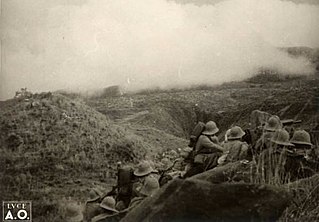 W
WThe Battle of Amba Aradam was a battle fought on the northern front of what was known as the Second Italo-Abyssinian War. This battle consisted of attacks and counterattacks by Italian forces under Marshal of Italy Pietro Badoglio and Ethiopian forces under Ras Mulugeta Yeggazu. This battle was primarily fought in the area around Amba Aradam which included most of Enderta Province.
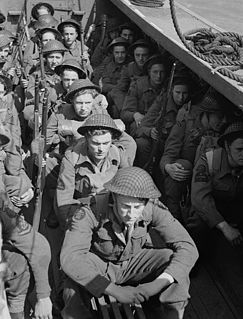 W
WThe Raid on Bardia was an amphibious landing at the coastal town of Bardia in North Africa by British Commandos over the night of 19/20 April 1941 during the Second World War. The raid was carried out by No. 7 Commando also known as A Battalion Layforce together with a small detachment from the Royal Tank Regiment supported by five navy ships and a submarine. The raid—which destroyed an Italian artillery battery and a supply dump—was deemed a success despite the loss of 71 men. The more lasting strategic effect of the raid was the diversion of a German armoured brigade from the front line to provide rear area security.
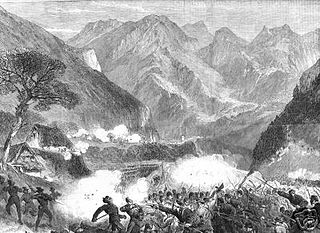 W
WThe Battle of Bezzecca was fought on 21 July 1866 between Italy and Austria, during the Third Italian Independence War. The Italian force, the Hunters of the Alps, were led by Giuseppe Garibaldi, and had invaded Trentino as part of the general Italian offensive against the Austrian force occupying north-eastern Italy after the decisive Prussian victory of Battle of Königgrätz, which had led Austria to move part of their troops towards Vienna.
 W
WThe Battle of Bilbao, part of the War in the North in the Spanish Civil War, had the Nationalist Army captured Bilbao and the rest of the Basque Country that was still being held by the Republic.
 W
WThe two Battles of the Bruch (Spanish: Batallas del Bruch; Catalan: Batalles del Bruc) were engagements fought successively between a French columns commanded by Brigadier General François de Schwarz and General of Division Joseph Chabran, and a body of Catalan volunteers and mercenaries led by General Antoni Franch i Estalella and Joan de la Creu Baiget, during the Peninsular War. The result of these battles and actions fought at El Bruc, near Barcelona, Catalonia, between 6–14 June 1808 was a Spanish victory. The Spanish also captured a French Imperial Eagle, adding to defeat a humiliation for the French army.
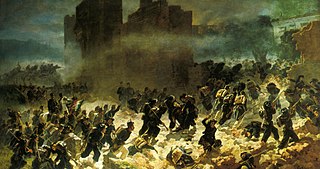 W
WThe Capture of Rome on September 20, 1870, was the final event of the long process of Italian unification also known as the Risorgimento, marking both the final defeat of the Papal States under Pope Pius IX and the unification of the Italian peninsula under King Victor Emmanuel II of the House of Savoy.
 W
WThe Second Battle of Dego was fought on 14 and 15 April 1796 during the French Revolutionary Wars between French forces and Austro-Sardinian forces. The battle was fought near Dego, a hamlet in northwestern Italy, and ended in a French victory.
 W
WThe Battle of Dego took place in present-day Italy during the War of the First Coalition between French and Austrian armies on 21 September 1794. It resulted in a French victory. The battle was described in Napoleon's correspondence, he having been present.
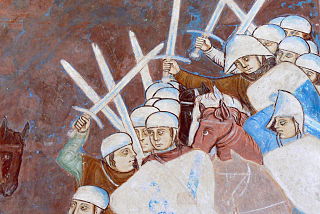 W
WThe Battle of Desio was fought on 21 January 1277 between the Della Torre and Visconti families for the control of Milan and its countryside. The battlefield is located near the modern Desio, a commune outside the city in Lombardy, Northern Italy.
 W
WThe Battle of Dogali was fought on 26 January 1887 between Italy and Ethiopia in Dogali near Massawa, in present-day Eritrea.
 W
WThe Battle of El Guettar was a battle that took place during the Tunisia Campaign of World War II, fought between elements of the Army Group Africa under General Hans-Jürgen von Arnim, along with Italian First Army under General Giovanni Messe, and U.S. II Corps under Lieutenant General George Patton in south-central Tunisia. It was the first battle in which U.S. forces were able to defeat the experienced German tank units, but the followup to the battle was inconclusive.
 W
WThe Battle of Epierre was part of a larger War of the First Coalition campaign that pitted a Republican French army led by François Christophe de Kellermann against a numerically stronger Kingdom of Sardinia-Piedmont army commanded by the Prince Maurizio, Duke of Montferrat. Under the overall leadership of the Austrian commander in chief Joseph Nikolaus De Vins, Montferrat launched an offensive in mid-August 1793 to recapture the Duchy of Savoy from the French. Because the French were preoccupied with the Siege of Lyon, the Piedmontese recovered most of the Maurienne and Tarentaise Valleys, but they were stopped just short of Albertville and the reconquest of Savoy. In September, Kellermann launched a counteroffensive in which he adroitly switched his troops between valleys in order to drive back the Piedmontese. At Épierre, the French under Jean-Denis Le Doyen defeated the Marquis of Cordon in a local action. By 8 October the Piedmontese abandoned all their gains and withdrew to the crests of the Graian Alps. In spite of his victory, the suspicious politicians in Paris put Kellermann in arrest and he was imprisoned until November 1794.
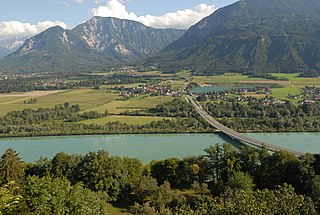 W
WThe Battle of Feistritz saw an Imperial French corps led by Paul Grenier attack an Austrian brigade under August von Vécsey. After putting up a stout resistance, the outnumbered Austrians were defeated and forced to retreat. The clash occurred during the War of the Sixth Coalition, part of the Napoleonic Wars. Feistritz im Rosental is located on the right bank of the Drava River near the southern border of Austria, about 16 kilometres (10 mi) southwest of Klagenfurt. At the time, it was located at the border with the French-controlled Illyrian Provinces to its west and south.
 W
WThe Five Days of Milan was a major event in the Revolutionary Year of 1848 and the start of the First Italian War of Independence. On 18 March, a rebellion arose in the city of Milan, and in five days of street fighting drove Marshal Radetzky and his Austrian soldiers from the city.
 W
WThe Battle of Fombio was fought between the French Army of Italy led by Napoleon Bonaparte and the Austrian army under Feldzeugmeister Johann Peter Beaulieu between 7 and 9 May 1796. It was the decisive strategic point of the campaign, as Bonaparte crossed the Po River at Piacenza in Beaulieu's rear, threatening both Milan and the Austrian line of communications. This threat forced the Austrian army to withdraw to the east.
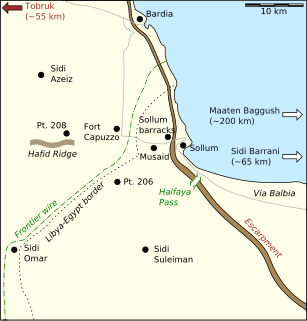 W
WFort Capuzzo (Ridotta Capuzzo) was a fort in the colony of Italian Libya, near the Libyan-Egyptian border, next to the Italian Frontier Wire. The Litoranea Balbo (Via Balbia) ran south from Bardia to Fort Capuzzo, 13 km (8 mi) inland, west of Sollum, then east across the Egyptian frontier to the port, over the coastal escarpment. The fort was built during Italian colonial repression of Senussi resistance in the Second Italo-Senussi War (1923–1931), as part of a barrier on the Libya-Egypt and Libya-Sudan borders.
 W
WThe Battle of Ganale Doria was a battle in 1936 during the Second Italo-Abyssinian War. It was fought on the "southern front". The battle consisted largely of air attacks by the Italian Royal Air Force, under the command of General Rodolfo Graziani, against an advancing and then withdrawing Ethiopian army under Ras Desta Damtu. The battle was primarily fought in the area along the Genale Doria River valley between Dolo and Negele Boran.
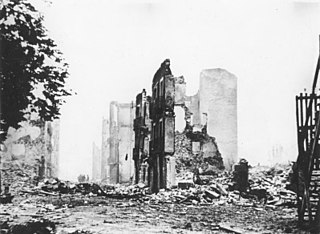 W
WThe bombing of Guernica was an aerial bombing of the Basque town of Guernica during the Spanish Civil War. It was carried out, at the behest of Francisco Franco's rebel Nationalist faction, by its allies, the Nazi German Luftwaffe's Condor Legion and the Fascist Italian Aviazione Legionaria, under the code name 'Operation Rügen'. The operation opened the way to Franco's capture of Bilbao and his victory in northern Spain.
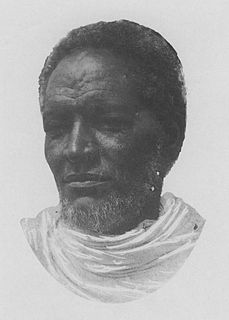 W
WThe Battle of Halai, or the Battle of Halay, which took place in December 1894, was one of the opening battles of the Eritrean Italian war.
 W
WThe Italian invasion of France, also called the Battle of the Alps, was the first major Italian engagement of World War II and the last major engagement of the Battle of France.
 W
WThe Battle of Kassala was fought on July 17, 1894, between an Italian colonial troop and Mahdist Sudanese forces.
 W
WThe Battle of Loano occurred on 23–24 November 1795 during the War of the First Coalition. The French Army of Italy led by Barthélemy Schérer defeated the combined Austrian and Sardinian forces under Olivier, Count of Wallis.
 W
WThe Battle of Lonato was fought on 3 and 4 August 1796 between the French Army of Italy under General Napoleon Bonaparte and a corps-sized Austrian column led by Lieutenant General Peter Quasdanovich. A week of hard-fought actions that began on 29 July and ended on 4 August resulted in the retreat of Quasdanovich's badly mauled force. The elimination of Quasdanovich's threat allowed Bonaparte to concentrate against and defeat the main Austrian army at the Battle of Castiglione on 5 August. Lonato del Garda is located near the SP 668 highway and the Brescia-Padua section of Autostrada A4 to the southwest of Lake Garda.
 W
WThe Battle of Majorca, also known as the Majorca Landings, was an amphibious landing of Republican forces early in the Spanish Civil War aimed at driving the Nationalists from Majorca and reclaiming the island for the Republic. After some initial tactical success, the expedition, commanded by Captain Alberto Bayo, ended in failure when the Nationalists counterattacked with ground troops and massively superior air power and drove the Republicans into the sea. So confident were the Republicans in their prediction of victory they optimistically called the operation "la reconquista de Mallorca" - "the reconquest of Majorca".
 W
WThe Battle of Mekelle, sometimes known as the siege of Mekelle, took place in January 1896 during the First Italo-Ethiopian War. Italian forces surrendered a partially completed fort at Mekelle, a city in the northern Tigray Region of Ethiopia which they had occupied since 1895, to Ethiopian forces.
 W
WThe sortie on Mestre occurred during the revolutionary year of 1848 on October 27. Italian volunteers charged the Austrian fortification, took the town and withdrew, with the loot of three baggage-waggons, eight horses, large quantity of ammunition and the military chest, back to the fort at Marghera.
 W
WThe Battle of Millesimo, fought on 13 and 14 April 1796, was the name that Napoleon Bonaparte gave in his correspondence to one of a series of small battles that were fought in Liguria, Northern Italy between the armies of France and the allied armies of the Habsburg Monarchy and of the Kingdom of Sardinia-Piedmont.
 W
WThe Battle of Molins de Rei or Battle of Molins de Rey or Battle of Molins del Rey saw an Imperial French corps led by Laurent Gouvion Saint-Cyr attack a Spanish army temporarily led by Theodor von Reding and the Conde de Caldagues because its commander Juan Miguel de Vives y Feliu was absent. Saint-Cyr outmaneuvered his opponents, distracting them with a false attack in front while sending the bulk of his force across Llobregat River in a turning movement around the Spanish right flank. The Spanish defensive lines crumbled and the French captured 1,200 soldiers, all the Spanish artillery and Caldagues himself. The Peninsular War engagement was fought near Molins de Rei, located 15 kilometres (9 mi) west of Barcelona, Catalonia, Spain.
 W
WThe Battle of Mondovì was fought on 21 April 1796 between the French army of Napoleon Bonaparte and the army of the Kingdom of Sardinia-Piedmont led by Michelangelo Alessandro Colli-Marchi. The French victory meant that they had put the Ligurian Alps behind them, while the plains of Piedmont lay before them. A week later, King Victor Amadeus III sued for peace, taking his kingdom out of the First Coalition. The defeat of their Sardinian ally wrecked Austrian Habsburg strategy and led to the loss of northwest Italy to the First French Republic.
 W
WThe Montenotte campaign began on 10 April 1796 with an action at Voltri and ended with the Armistice of Cherasco on 28 April. In his first army command, Napoleon Bonaparte's French army separated the army of the Kingdom of Sardinia-Piedmont under Michelangelo Alessandro Colli-Marchi from the allied Habsburg army led by Johann Peter Beaulieu. The French defeated both Habsburg and Sardinian armies and forced Sardinia to quit the First Coalition. The campaign formed part of the Wars of the French Revolution. Montenotte Superiore is located at the junction of Strada Provinciale 12 and 41 in the Liguria region of northwest Italy, 15 kilometres (9 mi) northeast of Carcare municipality. However, the fighting occurred in an area from Genoa on the east to Cuneo on the west.
 W
WThe Battle of Montenotte was fought on 12 April 1796, during the French Revolutionary Wars, between the French army under General Napoleon Bonaparte and an Austrian corps under Count Eugène-Guillaume Argenteau. The French won the battle, which was fought near the village of Cairo Montenotte in the Kingdom of Sardinia-Piedmont. The modern town is located in the northwestern part of Italy. On 11 April, Argenteau led 3,700 men in several assaults against a French mountaintop redoubt but failed to take it. By the morning of the 12th, Bonaparte concentrated large forces against Argenteau's now-outnumbered troops. The strongest French push came from the direction of the mountaintop redoubt, but a second force fell on the weak Austrian right flank and overwhelmed it. In its hasty retreat from the field, Argenteau's force lost heavily and was badly disorganized. This attack against the boundary between the Austrian and Sardinian armies threatened to sever the link between the two allies. This action was part of the Montenotte Campaign.
 W
WThe Battle of Nikolayevka was the breakout of Italian forces in January 1943, as a small part of the larger Battle of Stalingrad. The breakout involved the Mountain Corps of the Italian 8th Army near the village of Nikolayevka.
 W
WThe Battle of Palestro was fought on 30–31 May 1859 between the Austrian Empire and the combined forces of the Kingdom of Sardinia-Piedmont and France. The Franco-Piedmontese forces were victorious. It was fought just south to Palestro, a town in what is now the province of Pavia in northern Italy. It was believed that the Battle of Palestro was the last European battle in which a European Monarch rode into battle, that being King Victor Emmanuel II, who directly entered the fray with the Austrians.
 W
WThe bombing of Sant Vicenç de Calders was an aerial bombing of the railway station of Sant Vicenç de Calders, Catalonia, during the Spanish Civil War. It was carried out on 8 October 1938 at the behest of Francisco Franco's nationalist regime by the Aviazione Legionaria of its fascist Italian allies.
 W
WThe Battle of Sant'Egidio was fought on 12 July 1416 at Sant'Egidio, near Umbertide between the condottiere Braccio da Montone and the troops of Perugia, under Carlo I Malatesta. Braccio's victory resulted in his long-desired conquest of Perugia, of which he became lord.
 W
WThe First Battle of Saorgio saw a Republican French army commanded by Gaspard Jean-Baptiste Brunet attack the armies of the Kingdom of Sardinia-Piedmont and Habsburg Austria led by Joseph Nikolaus De Vins. The local Sardinian commander in the Maritime Alps was Charles-François Thaon, Count of Saint-André. Though the French were initially successful in this War of the First Coalition action, their main assaults against the strong defensive positions on the Massif de l'Authion and the Col de Raus failed with serious losses. Saorge is now located in France about 70 kilometres (43 mi) northeast of Nice, but in 1793 Saorgio belonged to Piedmont. In April 1794 the French seized the positions from the Austro-Sardinians in the Second Battle of Saorgio.
 W
WThe Battle of Saorgio was fought from 24 to 28 April 1794 between a French First Republic army commanded by Pierre Jadart Dumerbion and the armies of the Kingdom of Sardinia-Piedmont and the Habsburg Monarchy led by Joseph Nikolaus De Vins. It was part of a successful French offensive designed to capture strategic positions in the Maritime Alps and Ligurian Alps, and on the Mediterranean coast. Tactical control of the battle was exercised by André Masséna for the French and Michelangelo Alessandro Colli-Marchi for the Coalition. Saorge is located in France, about 70 kilometres (43 mi) northeast of Nice. At the time of the battle, the town was named Saorgio and belonged to Piedmont.
 W
WThe Battle of Shire was a battle fought on the northern front of what was known as the Second Italo-Abyssinian War. This battle consisted of attacks and counterattacks by Italian forces under Marshal of Italy Pietro Badoglio and Ethiopian forces under Ras Imru Haile Selassie. This battle was primarily fought in the Shire area of Ethiopia.
 W
WThe Battle of Sidi Bou Zid (Unternehmen Frühlingswind/Operation Spring Breeze) took place during the Tunisia Campaign from 14–17 February 1943, in World War II. The battle was fought around Sidi Bou Zid, where a large number of US Army units were mauled by German and Italian forces. It resulted in the Axis forces recapturing the strategically important town of Sbeitla in central Tunisia.
 W
WThe Siege of Naples was a siege in 1191 during the expedition of Emperor Henry VI aiming to conquer Kingdom of Sicily. It lasted three months before Henry abandoned his expedition after suffering a heavy loss due to disease; after his retreat the Sicilians set a counterattack that reconquered his Italian conquests and captured his wife Empress Constance.
 W
WThe Second Battle of Tembien was a battle fought on the northern front of what was known as the Second Italo-Abyssinian War. This battle consisted of attacks by Italian forces under Marshal Pietro Badoglio on Ethiopian forces under Ras Kassa Haile Darge and Ras Seyoum Mangasha. This battle, which resulted in a decisive defeat of Ethiopian forces, was primarily fought in the area around the Tembien Province. The battle is notable for the large-scale use of mustard gas by the Italians.
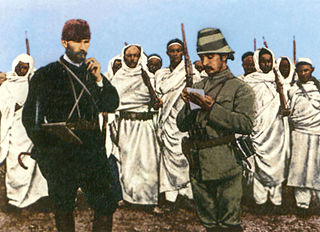 W
WBattle of Tobruk (1911) or Nadura Hill Battle was a small engagement in the Italo-Turkish War. It is mostly known for the involvement and leadership of future Turkish president Mustafa Kemal.
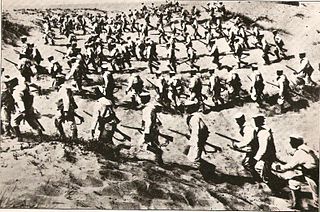 W
WThe Battle of Tripoli was fought in October 1911, during the initial stages of the Italo-Turkish War, and saw the capture of Tripoli, capital city of Tripolitania, by Italian landing forces. It marked the beginning of the land campaign in Libya of the Italo-Turkish War as well as the beginning of the Italian colonization of Libya.
 W
WThe Battle of Turbigo took place the 3 June 1859 saw the French army secure two crossing points over the Ticino River, allowing them to get a foothold in Austrian Lombardy.
 W
WThe Veronese Easter was a rebellion during the Italian campaign of 1797, in which inhabitants of Verona and the surrounding areas revolted against the French occupying forces under Antoine Balland, while Napoleon Bonaparte was fighting in Austria. The uprising received its name through association with the anti-French uprising of the Sicilian Vespers of the 13th century. Incited by oppressive behaviour by the French, it began on the morning of 17 April 1797, the second day of Easter: the enraged population succeeded in defeating more than a thousand French soldiers in the first hour of fighting, forcing them to take refuge in the town's fortifications, which the mob then captured by force. The revolt ended on 25 April 1797 with the encirclement and capture of the town by 15,000 soldiers, who then forced it to pay a huge fine and hand over various assets, including artwork.
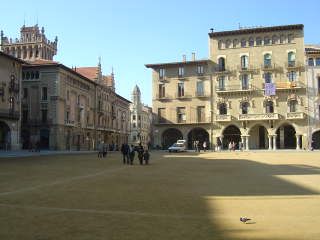 W
WThe Battle of Vich or Battle of Vic on 20 February 1810 saw a Spanish force under Henry O'Donnell suddenly attack a 5,500-man Imperial French division led by Joseph Souham. After bitter fighting the French prevailed, forcing O'Donnell's men to retreat. The engagement occurred during the Peninsular War, part of the Napoleonic Wars. Vic is located 60 kilometres (37 mi) north of Barcelona in the province of Catalonia.
 W
WThe Western Desert campaign, took place in the deserts of Egypt and Libya and was the main theatre in the North African campaign of the Second World War. Military operations began in June 1940 with the Italian declaration of war and the Italian invasion of Egypt from Libya in September. Operation Compass, a British five-day raid in December 1940, led to the destruction of the Italian 10th Army. Benito Mussolini sought help from Adolf Hitler, who sent a small German force to Tripoli under Directive 22. The Afrika Korps was formally under Italian command as Italy was the main Axis power in the Mediterranean and North Africa.